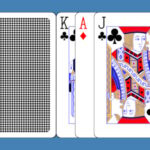Anime, also known as Japanimation, refers to hand-drawn and computer-generated animation that originates from Japan. The word "anime" is derived from the English term "animation," and within Japan, it encompasses all forms of animated media. Outside Japan, however, "anime" specifically denotes animated works produced in Japan or those influenced by Japanese animation styles, which are often characterized by vivid graphics, expressive characters, and imaginative themes. This broader cultural interpretation sometimes allows for the term to be applied to animation created in other countries that emulate the Japanese aesthetic. The history of Japanese animation dates back to at least 1917, marking its early beginnings. A distinctive art style began to take shape in the 1960s, largely influenced by Osamu Tezuka’s pioneering works, and gained popularity throughout the latter half of the 20th century, developing a substantial domestic and international fan base. Anime can be experienced through various channels, including theatrical screenings, television broadcasts, direct-to-home media, and digital streaming over the Internet. Many anime series and films are original productions, but a significant portion are adaptations of Japanese manga (comics), light novels, or video games. Over time, production techniques have evolved in response to advancing technologies. As a multimedia art form, anime combines elements of graphic design, character development, cinematic techniques, and other creative processes. Often, anime emphasizes detailed settings and atmosphere over highly fluid motion, employing camera effects such as panning, zooming, and dynamic angles to enhance storytelling. Anime features a wide variety of art styles, with character designs ranging from exaggerated features—like large, emotive eyes—to more realistic proportions. The genre spans numerous categories, appealing to both broad and niche audiences, and includes themes that cater to diverse tastes. In the United States, the anime fandom has given rise to terms such as "wapanese," initially used to describe white individuals aspiring to Japanese culture, and later "weeaboo," which specifically refers to fans exhibiting intense interest in Japanese anime and its subculture.
Another word that has arisen describing fans in the United States is wapanese meaning White individuals who desire to be Japanese or later known as weeaboo for individuals who demonstrate a strong interest in Japanese anime subculture which is a term t
Embed this game





















